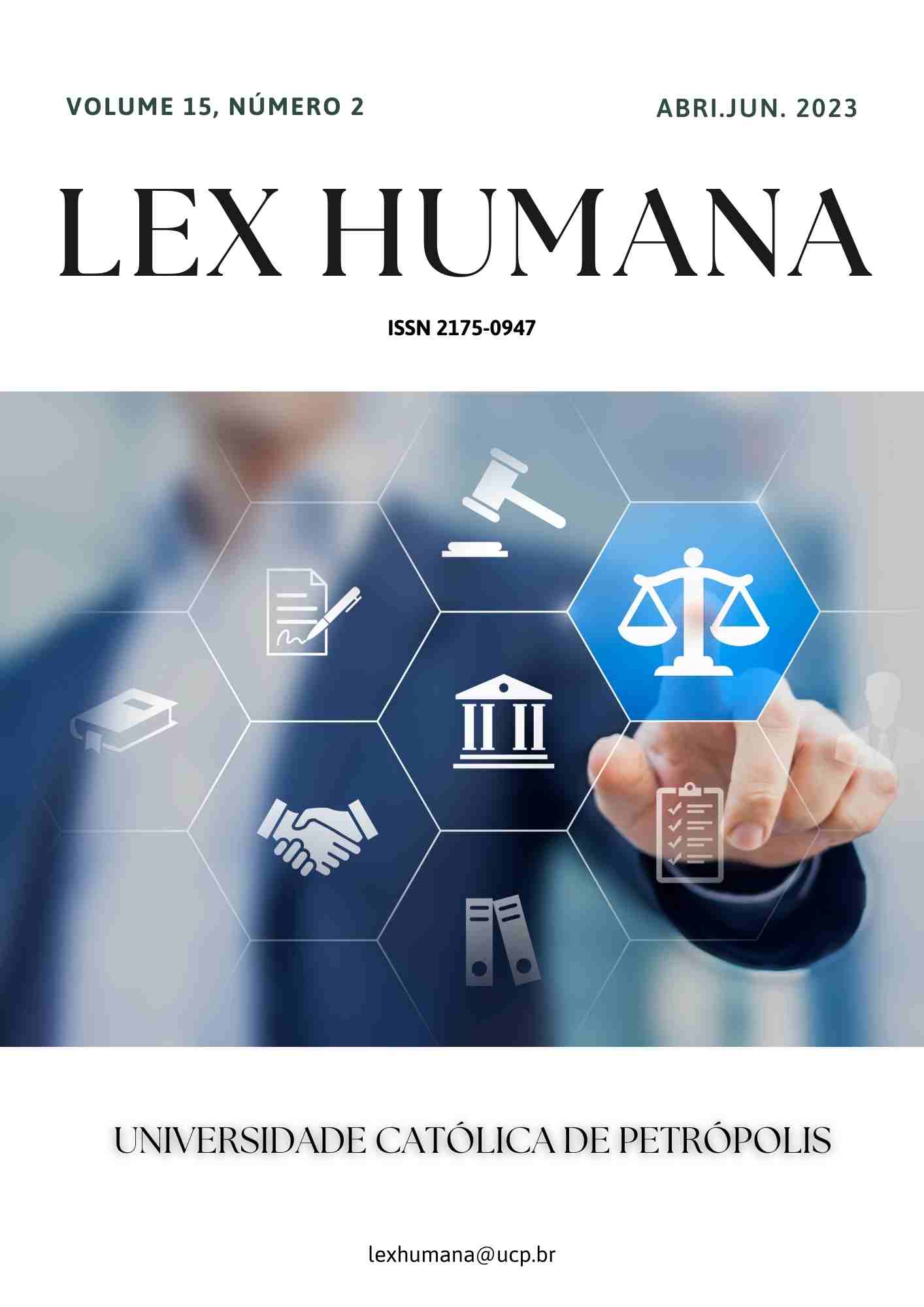Resumo
O desenvolvimento da informação e do mundo digital determina a formação de novos pedidos públicos, em primeiro lugar, para garantir a segurança do ciberespaço. O desenvolvimento de tarefas sociais que podem ser resolvidas utilizando as tecnologias da informação está em constante crescimento, portanto, o número de cibercrimes está aumentando, e suas especificidades estão mudando. Uma análise da tendência de desenvolvimento da segurança cibernética e dos crimes cibernéticos mostrou que o número e a escala dos ataques cibernéticos continuarão a crescer. Assim, o objetivo do artigo é encontrar as direções de desenvolvimento de abordagens para garantir a segurança no ciberespaço, de acordo com os modernos desafios globais. O artigo determina que novos desafios globais mudaram significativamente o sistema de vida das pessoas, conduzindo transações financeiras, comércio, recebendo serviços (administrativos, comunitários, sociais e domésticos, etc.), e fornecendo sistemas de comunicação. Nas condições da pandemia, os processos de todas as esferas da atividade humana só se espalharam. A análise dos modelos de digitalização para garantir a segurança cibernética é apresentada no artigo, mas necessita de esclarecimento e desenvolvimento adicional, que se relaciona com os novos desafios globais na arquitetura de segurança no mundo e no continente europeu. O artigo considera abordagens para garantir a eficácia da segurança cibernética em novas condições sociais. O artigo usa os métodos de gráficos de controle para conduzir uma pesquisa sociológica para classificar os fatores de influência nas relações de causa e efeito da cibersegurança. A hipótese de adiamento em relação à estruturação dos fatores de influência nos permite sistematizar direções para futuras pesquisas. A projeção da linha de tendência do número de ciberataques e do número de sujeitos submetidos a ciberataques no período analisado determina a escala e a complicação dos processos de proteção tanto a nível da empresa quanto a nível do estado.
Referências
AL-Nuaimi, M.N. (2022), "Human and contextual factors influencing cyber-security in organizations, and implications for higher education institutions: a systematic review", Global Knowledge, Memory and Communication, Vol. ahead-of-print No. ahead-of-print. https://doi.org/10.1108/GKMC-12-2021-0209
Alsmadi, D., Maqousi, A. and Abuhussein, T. (2022), "Engaging in cybersecurity proactive behavior: awareness in COVID-19 age", Kybernetes, Vol. ahead-of-print No. ahead-of-print. https://doi.org/10.1108/K-08-2022-1104
Asbaş, C. and Tuzlukaya. (2022), "Cyberattack and Cyberwarfare Strategies for Businesses", Özsungur, F. (Ed.) Conflict Management in Digital Business, Emerald Publishing Limited, Bingley, pp. 303-328. https://doi.org/10.1108/978-1-80262-773-220221027
Chhabra Roy, N. and Prabhakaran, S. (2023), "Sustainable response system building against insider-led cyber frauds in banking sector: a machine learning approach", Journal of Financial Crime, Vol. 30 No. 1, pp. 48-85. https://doi.org/10.1108/JFC-12-2021-0274
Dupuis, D., Smith, D. and Gleason, K. (2023), "Old frauds with a new sauce: digital assets and space transition", Journal of Financial Crime, Vol. 30 No. 1, pp. 205-220. https://doi.org/10.1108/JFC-11-2021-0242
Kaswan, K.S., Dhatterwal, J.S., Kumar, S. and Lal, S. (2022), "Cybersecurity Law-based Insurance Market", Sood, K., Dhanaraj, R.K., Balusamy, B., Grima, S. and Uma Maheshwari, R. (Ed.) Big Data: A Game Changer for Insurance Industry (Emerald Studies in Finance, Insurance, and Risk Management), Emerald Publishing Limited, Bingley, pp. 303-321. https://doi.org/10.1108/978-1-80262-605-620221018
Li, Y., Li, J., Fan, Q. and Wang, Z. (2022), "Cybercrime's tendencies of the teenagers in the COVID-19 era: assessing the influence of mobile games, social networks and religious attitudes", Kybernetes, Vol. ahead-of-print No. ahead-of-print. https://doi.org/10.1108/K-07-2021-0582
Ma, K.W.F. and McKinnon, T. (2022), "COVID-19 and cyber fraud: emerging threats during the pandemic", Journal of Financial Crime, Vol. 29 No. 2, pp. 433-446. https://doi.org/10.1108/JFC-01-2021-0016
Panteli, N., Nurse, J.R.C., Collins, E. and Williams, N. (2022), "Trust disruption and preservation in the Covid-19 work from home context", Journal of Workplace Learning, Vol. ahead-of-print No. ahead-of-print. https://doi.org/10.1108/JWL-02-2022-0017
Tamer, G., Tetik, G. and Oktay, S. (2022), "Digital Conflict in Business Infrastructure", Özsungur, F. (Ed.) Conflict Management in Digital Business, Emerald Publishing Limited, Bingley, pp. 147-165. https://doi.org/10.1108/978-1-80262-773-220221011
Thomas, G. and Sule, M.-J. (2022), "A service lens on cybersecurity continuity and management for organizations’ subsistence and growth", Organizational Cybersecurity Journal: Practice, Process and People, Vol. ahead-of-print No. ahead-of-print. https://doi.org/10.1108/OCJ-09-2021-0025
TN, N. and Shailendra Kulkarni, M. (2022), "Zero click attacks – a new cyber threat for the e-banking sector", Journal of Financial Crime, Vol. ahead-of-print No. ahead-of-print. https://doi.org/10.1108/JFC-06-2022-0140
Tuna, A.A. and Türkmendağ, Z. (2022), "Cyber Business Management", Özsungur, F. (Ed.) Conflict Management in Digital Business, Emerald Publishing Limited, Bingley, pp. 281-301. https://doi.org/10.1108/978-1-80262-773-220221026
Wronka, C. (2022), "“Cyber-laundering”: the change of money laundering in the digital age", Journal of Money Laundering Control, Vol. 25 No. 2, pp. 330-344. https://doi.org/10.1108/JMLC-04-2021-0035
Wronka, C. (2022), "Impact of COVID-19 on financial institutions: navigating the global emerging patterns of financial crime", Journal of Financial Crime, Vol. 29 No. 2, pp. 476-490. https://doi.org/10.1108/JFC-03-2021-0073

Este trabalho está licenciado sob uma licença Creative Commons Attribution-NonCommercial-NoDerivatives 4.0 International License.
Copyright (c) 2023 Lex Humana (ISSN 2175-0947)
